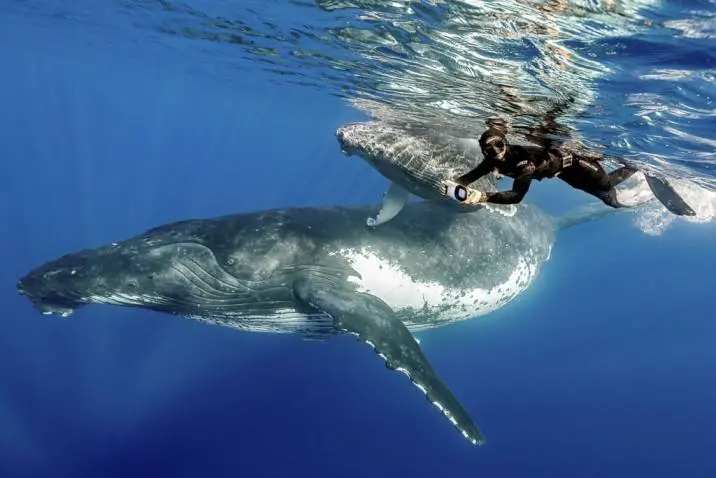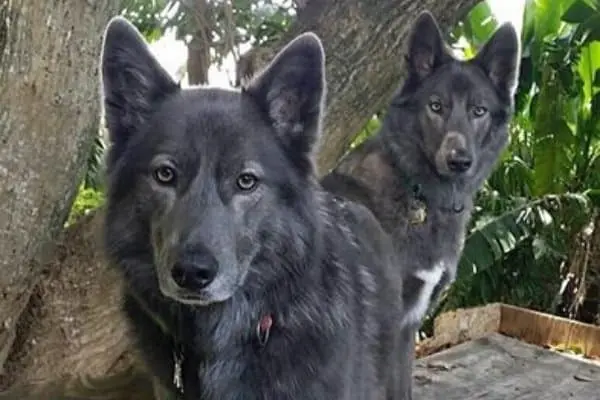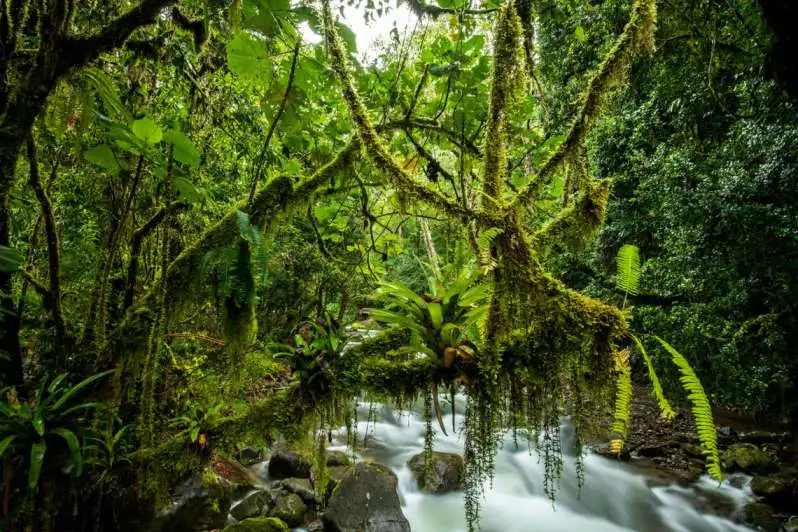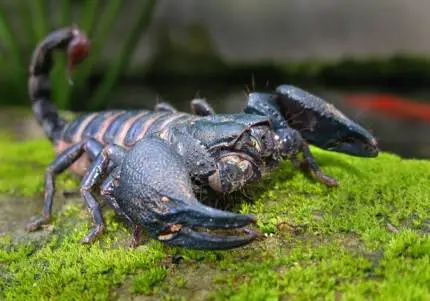To be honest, the major reason I went to the South Pacific Kingdom of Tonga—one of the few places on Earth where it is possible to swim with humpback whales—was the possibility of seeing them up close. It's the primary reason most travelers come to this far-flung nation, and I had to do it after spending a year in New Zealand. Every year, humpback whales pause in the warm seas around the islands of Tonga between July and October to give their newborn calves time to develop and learn before making the arduous trek back to Antarctica. Because of this, mothers and calves are nearly usually the whales that are seen on whale swimming excursions. Every now and then, there's another female or male around serving as an escort.
The whales are remarkably serene. Regarding human involvement with these gentle giants, the Tongan government has severe rules. There is a limit to how many boats can be near them at any given time, as well as how many people can be in the water with the whales. Only boats and authorized guides are permitted to approach them. These guidelines have the effect of ensuring that the humpbacks never feel overpowered or threatened by us. Yes, they can escape into the large ocean beneath them if and when they do.
On the boat are six enthusiastic visitors, a guide, a skipper, and a spotter, totaling nine people. The main town of the outer Vava'u island group, Neiafu, is where we depart in the morning. While the boat slowly navigates the harbor, we receive a safety briefing and are informed that searching for whales may take many hours or even longer. The secret is to be patient. Though only 20 boats are permitted an official license at a time, there are many skippers—at least one for each diving company in Vava'u—and they communicate with one another all the time. Everyone is aware of it if they see the sleek backs separating the seas. Following the "two-at-a-time" guideline, the boats give their swimmers a brief opportunity to interact with the whales before leaving, with the next boat swiftly assuming their position.
Unlike previous trips, we are able to see some whales very quickly. After twenty minutes of departing Neiafu, we are crammed together at the boat's side, yelling as ominous figures in the water shoot vapor spouts skyward. The whales, a mother and her calf, are swimming. We keep a safe distance behind, thinking they will calm down. Fins and snorkels are quickly attached. My pulse is racing. At a time, four of the six may be found in the water. My two partners, who are older, are seasoned swimmers who have encountered whales on multiple occasions. They kindly let the others have the first swim, and the second and third as well. We had no idea that it wasn't a completely unselfish deed!
Until the whales settle in one spot, swims consist of us slipping softly (no splashing!) off the back of the boat and paddling as rapidly as we can toward the whales. We were clearly not going to be able to keep up for very long. You see black forms fading into the horizon for about fifteen seconds before you're back in the boat. The elderly couple graciously allowed us to begin with their difficult swims! However, those fifteen seconds remain enchanted. As our guide, Dion, a genuine Aussie lad, pulls me back into the boat, I can't help but smile. This keeps happening a few times before the mother humpback eventually decides it's time to take a nap. They pull up at a big cove, where the calf is playing about the mother while she unwinds in the warm water. This is the start of the genuine experience.
It's difficult for me to put into words how it felt to be in the water, only a few meters away from two of the biggest animals I had ever seen. "Magical" is the word that springs to mind. Really, I was swimming alongside humpback whales! After hearing this story, a lot of people exclaim, typically not in a polite way, "you must have been terrified!" However, I never felt in danger or terrified at all. Beautiful animals like these pose no harm, as long as you stay out of the way of the calf and its mother. The mother stayed approximately ten meters below the surface, occasionally rising to the surface to breathe, while the calf ran around, curious yet cautious of us odd creatures. She came within inches of my face at one point, as her fin tip skimmed over only a foot or two. I could have touched her with my hand.
Another time, I observed something pale in the water behind and below me as I was swimming after the moving mother and calf. A second humpback surfaced slowly from the depths. About ten feet below me, the whale swam directly beneath me, flipped onto its back to reveal its pale, ridged underbelly, and brushed its fins idly along as it STARTED directly at me. Excitedness was threatening to take my breath. For a few hours, we spent time with the humpbacks, going in and out of the water to ensure that each animal had a turn.
If it seemed fortunate that we had such a positive encounter with these two whales, I was even more fortunate since four of my traveling colleagues were underwater photographers, equipped with the biggest, most sophisticated cameras I have ever seen. I was thrilled when one of them took a picture of me standing just above the calf and sent it to me via email. I didn't even take the picture, yet it's one of my most prized possessions! Dion also brought a GoPro camera, which he showed me the footage from. I therefore got to fully enjoy this incredible phenomenon and also returned with all of these pictures to show you! I'm lucky.
Read Also: How to Harmonise Wildlife and Energy Manufacturing
Interacting With Wildlife Responsibly
Never, Ever Feed Wildlife
In addition to putting you in risk, feeding wildlife can make it learn that humans are their only source of food or make it more hostile, neither of which is desirable. Animals that consume human food run the risk of being sick or emaciated.
Mind Your Food And Dispose Of Scraps Properly
Inadvertent feeding of wildlife can also happen if food is not disposed of properly or is left unsupervised. Don't leave food lying about unattended when you're camping, hiking, or just enjoying the outdoors. Instead, pack any snacks and meals in appropriate containers. There most likely are animals nearby, despite your belief to the contrary. Additionally, never place food close to a trash can. Take it with you if the bins are full or you are unable to locate one. Avoid being indolent!
Keep Your Distance
Animal behavior is erratic. Determining the response of wildlife to a given scenario can be challenging, unless you have extensive knowledge of animal behavior. An animal is not always tranquil, even if it appears so. There are additional risks during other seasons of the year, such mating season. During certain periods, animals may become even more aggressive or volatile, therefore extra vigilance is advised. Too many times, people have gotten too close to animals and hurt themselves, which usually has detrimental effects on the animal as well.
Don’t Touch
Please refrain from attempting to pet an animal that comes towards you voluntarily if you're fortunate enough to see one. They don't like it, they're not pets, and it can frighten them into acting aggressively. Certain animals can be harmed by your contact as well, especially marine life, which has extremely delicate skin. The chemicals in lotions, sunblock, and insect repellant that are frequently present on our skin can harm whales, dolphins, and sea turtles.
Always Be Aware Of Your Surroundings
A lot of interactions with wildlife turn harmful just because a person wasn't paying attention. When in the great outdoors, keep an ear out for wildlife, avoid using headphones, generate noise, and try to move in groups.
Stay Calm
Always significant. If you see wildlife that surprises you, don't panic and keep your cool. Even though the animal's initial goal was probably not to hunt, their pursuit instincts might have taken over if they suddenly ran or moved away. Remain facing them and take a gradual step back.







